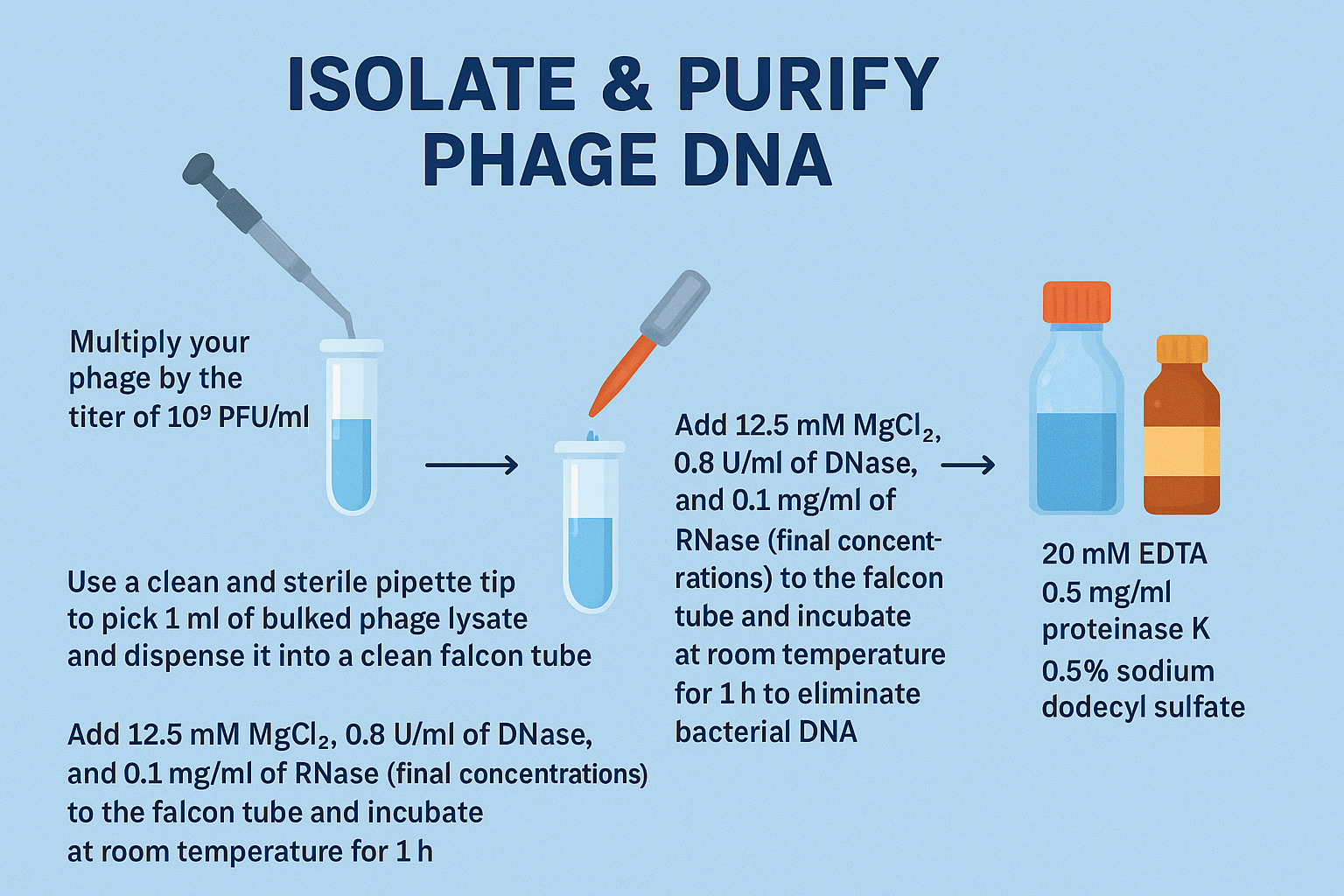
In general, there are 5 steps for phage display technology as below:

Step 1: Constructing the Phage Display Library
Using sophisticated recombinant DNA techniques, scientists engineer the genetic makeup of bacteriophages by integrating foreign cDNA sequences into their viral DNA. This process involves the meticulous splicing of different sets of genes into the genomes of multiple phages. These inserted sequences are fused with genes responsible for encoding coat proteins, allowing the resulting phages to prominently display specific proteins, peptides, or antibodies on their outer surfaces. Each individual phage within the library serves as a carrier for a unique protein variant, creating a diverse repertoire of potential binding agents.
Step 2: Binding
The meticulously constructed phage libraries are then subjected to exposure to carefully selected target molecules. These targets, known as specific ligands, are strategically chosen to aid in the identification of desired molecules, such as immobilized proteins, cell surface proteins, or components of vascular endothelium. During this phase, only phages containing peptides or proteins that possess an affinity for the targets will engage in interactions, forming molecular bonds through specific recognition mechanisms.
Step 3: Washing
In order to eliminate any phages that have failed to bind to the target molecules, a thorough washing process is employed. This step involves the removal of unbound phages, ensuring that only those which have successfully formed bonds with the target molecules remain. By selectively washing away non-binding phages, the specificity and purity of the resulting phage population are enhanced.
Step 4: Elution
Following the binding phase, the target-bound phages are meticulously recovered through a process known as elution. This crucial step involves the strategic separation of the phages from the target molecules while preserving their structural integrity. Through carefully tailored elution methods, scientists are able to extract the bound phages, isolating them for further analysis and amplification.
Step 5: Amplification
The eluted phages, which have demonstrated a specific affinity for the target molecules, are then utilized to infect fresh host cells for the purpose of amplification. Alternatively, the recovered phages can undergo direct bacterial infection, leading to the rapid replication and amplification of the target-bound phage population. This amplification step serves to significantly increase the concentration of phages displaying the desired binding sequences, thereby facilitating subsequent rounds of selection and refinement.
Repeat Cycle
The iterative nature of the phage display process necessitates multiple cycles of selection and amplification to achieve optimal results. After each round of selection, the amplified phage population is subjected to further iterations of the binding, washing, elution, and amplification steps. This repeated cycle, typically undertaken 2-3 times, enables the stepwise enrichment of phages displaying the most effective binding sequences, ultimately leading to the identification of high-affinity binding agents.
Enrichment and Purification
Upon completion of multiple selection cycles, the resulting phage repertoire can undergo additional enrichment and purification procedures. These methods, which often involve sophisticated precipitation techniques, are aimed at further increasing the concentration of target-specific phages within the population. By enhancing the overall phage titer and refining the specificity of the displayed peptides or proteins, these enrichment and purification steps serve to optimize the efficacy and utility of the phage display platform.


Leave a Reply
You must be logged in to post a comment.